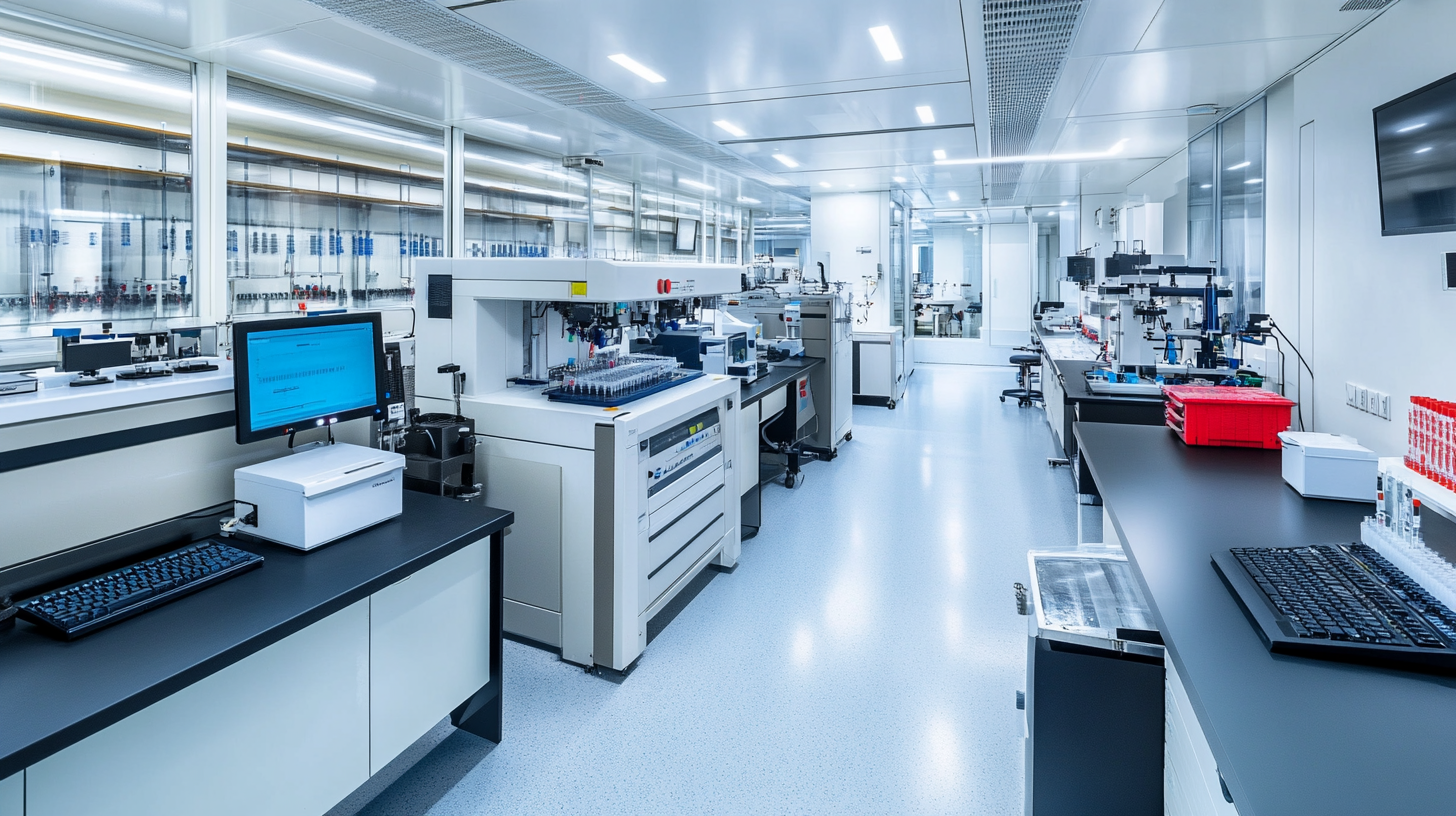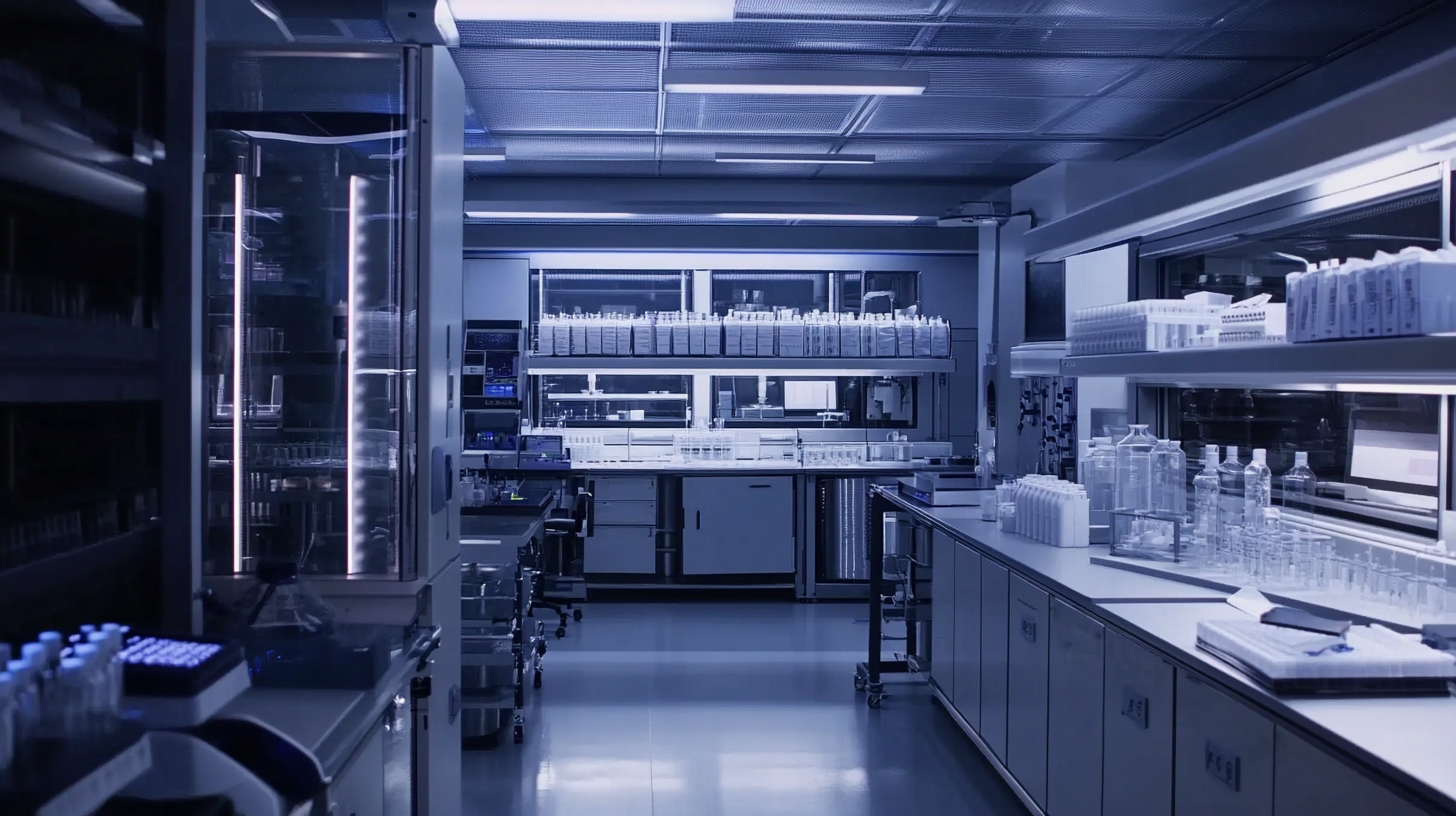

Challenges in Selecting the Right Laboratory Equipment: Insights from Industry Trends
In the rapidly evolving landscape of scientific research and development, selecting the right laboratory equipment has become a critical challenge for professionals across various industries. As advancements in technology and methodologies continue to reshape the way laboratories operate, the choices available for laboratory equipment are more diverse than ever. However, with increased innovation comes the complexity of ensuring that the equipment not only meets the specific needs of research projects but also aligns with industry trends and regulatory standards. This blog explores the key challenges faced by organizations in choosing laboratory equipment, providing insights into the factors influencing decision-making processes. By understanding these dynamics, industry professionals can better navigate the intricacies of procurement, ultimately improving operational efficiency and research outcomes.

Understanding the Diverse Range of Laboratory Equipment Available Today
In today's fast-paced scientific landscape, selecting the right laboratory equipment can be a daunting task due to the diverse range of options available. According to a market research report by Grand View Research, the global laboratory equipment market is projected to reach USD 49.9 billion by 2025, driven by innovations in technology and an increasing emphasis on quality standards in research and development. This growth underscores the importance of being equipped with the latest tools to enhance productivity and accuracy in experimental processes.
Laboratory equipment spans a vast array, including advanced instruments such as high-performance liquid chromatography (HPLC), spectrophotometers, and automated pipetting systems. A report from MarketsandMarkets highlights that the HPLC market alone is expected to grow at a CAGR of 7.6% from 2020 to 2025, reflecting the rising demand for precise analytical tools in both pharmaceuticals and environmental testing. As new technologies emerge, laboratories must remain informed about trends and advancements to make informed choices that align with their specific research needs.
Another key consideration is the increasing integration of digital solutions in laboratory equipment. The trend towards automation and data connectivity is transforming traditional laboratory environments, offering enhanced efficiency and reliability. According to a report by BIS Research, the global lab automation market is estimated to reach USD 5.92 billion by 2025, with automated solutions reducing human errors and streamlining workflows. In this environment, selecting the right laboratory equipment involves not only assessing the capabilities and performance of individual tools but also understanding how they fit within the broader context of laboratory operations.

Key Factors to Consider When Choosing Laboratory Equipment
Selecting the right laboratory equipment can be a daunting task, particularly in an era of rapid technological advancements. When evaluating options, one of the most critical factors to consider is the specific needs of your laboratory. This entails understanding the types of experiments you’ll conduct, the required precision and accuracy, and the expected volume of work. Aligning equipment specifications with these needs ensures that your investment will enhance productivity and reliability in experimental outcomes.
Another key factor is regulatory compliance and safety standards. Laboratories often operate under strict guidelines, and failing to adhere to these can result in severe consequences. Therefore, it is essential to validate that the equipment meets all necessary certifications and safety regulations relevant to your specific field. Moreover, considering the ease of maintenance and availability of support services can significantly impact the long-term functionality and efficiency of the equipment, helping to avoid costly downtimes that can disrupt research progress.
Finally, staying informed about industry trends can provide valuable insights into advancements that may influence your choice. For instance, the rise of automation and smart technologies in laboratory settings has revolutionized how experiments are conducted. Incorporating cutting-edge innovations not only improves accuracy but can also lead to more efficient workflows, ultimately advancing the pace of research and discovery within your lab.
Challenges in Selecting the Right Laboratory Equipment
This bar chart illustrates the key factors to consider when choosing laboratory equipment, highlighting their importance level based on industry insights. Budget and quality emerge as the most critical factors.
Analyzing Industry Trends Shaping Laboratory Equipment Selection
The laboratory equipment market is navigating a complex landscape influenced by various industry trends that shape selection processes. As laboratories strive to enhance efficiency and precision, the demand for innovative equipment is rising. Market research indicates a significant growth trajectory in laboratory-grown diamond applications. The market is projected to expand from approximately $22.79 billion in 2023 to $74.45 billion by 2032, reflecting a compound annual growth rate that highlights the increasing importance of advanced materials in laboratory settings.
Moreover, the challenges faced in selecting the right laboratory equipment are compounded by external factors such as the impact of COVID-19 on supply chains and manufacturing processes. Laboratories are now compelled to prioritize flexibility and reliability in equipment procurement, especially when dealing with critical applications in sectors like food processing and analytics. An ongoing focus on health and safety has led to an increased demand for equipment that adheres to stringent regulations and standards, further driving innovation in the industry. As companies prepare for events like analytica China 2024, the dialogue around best practices for equipment selection becomes even more vital.

Common Pitfalls in Selecting Laboratory Equipment and How to Avoid Them
When selecting laboratory equipment, many researchers inadvertently fall into common pitfalls that can hinder their work. One major mistake is not aligning the choice of equipment with the specific needs of their experiments. It’s crucial to consider the type of samples being processed, the required precision, and compatibility with existing protocols. A centrifuge, for example, can vary drastically in specifications; inexperienced users may overlook essential features such as rotor capacity and speed, leading to unsatisfactory results and wasted resources.
Additionally, overlooking team culture and equipment handling training can significantly impact efficiency. New lab members should inquire about the available mentorship and support regarding equipment usage. This is akin to the questions one might ask when moving to a new lab; understanding the dynamics can help prevent future frustrations. Ensuring that adequate training is provided can mitigate common errors, fostering a smoother integration of new equipment into lab workflows. By taking these considerations into account, researchers can avoid the pitfalls that often accompany the process of selecting the right laboratory equipment and ultimately enhance their research outcomes.
Challenges in Selecting the Right Laboratory Equipment
The Importance of Future-Proofing Your Laboratory Equipment Choices
When it comes to laboratory equipment procurement, future-proofing is an essential consideration that cannot be overlooked. With rapid technological advancements and evolving industry standards, selecting equipment that can adapt to future demands is crucial. Investing in versatile and upgradeable equipment not only ensures that laboratories remain competitive but also mitigates the financial risk associated with obsolescence. This foresight enables laboratories to remain aligned with emerging innovations, ultimately improving research outcomes and productivity.
Additionally, future-proofing laboratory equipment choices involves evaluating potential scalability. As projects and research scopes change, laboratories need equipment that can grow with their needs. This might involve choosing modular systems or platforms that allow for the integration of new technologies and accessories as they become available. By prioritizing flexibility in equipment selection, laboratories can optimize their investments and avoid frequent costly upgrades. Thus, a strategic approach to future-proofing equipment can empower researchers to focus on their core missions rather than being bogged down by inadequacy or outdated tools.
Challenges in Selecting the Right Laboratory Equipment: Insights from Industry Trends - The Importance of Future-Proofing Your Laboratory Equipment Choices
| Challenge | Industry Insight | Future-Proofing Approach |
|---|---|---|
| Cost Constraints | Budget limitations can restrict the choice of advanced equipment. | Invest in modular equipment that can be upgraded over time. |
| Rapid Technological Changes | Keeping up with constant innovations can be overwhelming. | Select equipment with flexible software updates and features. |
| Regulatory Compliance | Changing regulations require regular updates to equipment. | Choose equipment from manufacturers known for compliance support. |
| Training Requirements | Staff may require training for new technology. | Opt for user-friendly equipment with comprehensive support and training resources. |
| Integration with Existing Systems | New equipment must work seamlessly with current systems. | Select equipment designed with interoperability in mind. |





